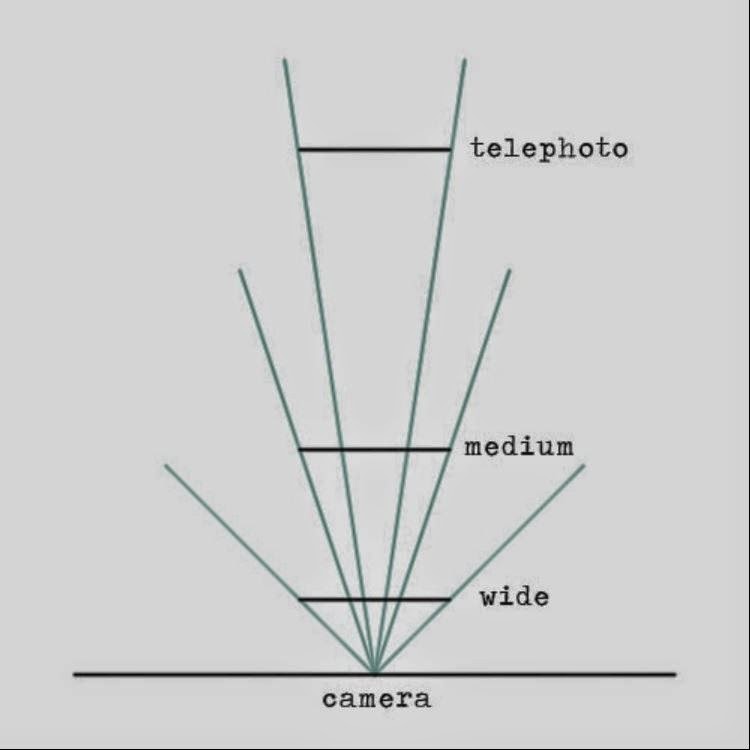Angle of View
Angle of view is dependent on camera and film or digital sensor size along with the chosen lens.
Lens choices
Wide Angle: This is a much shorter focal length than standard lenses and they see a wider view. They can cause distortion, making them unsuitable for portraits but very useful for interiors and giving depth to an image. It is usually possible to get quite close to your subject, allowing for creative distortion.
Wide angle lets us see the bigger picture and makes objects such as the railway bridge in this image look further away than it is.
 |
| 24mm view |
Standard: Closest to how the eye sees, used when we need to portray a scene or subject as an accurate representation.
The railway bridge looks about right distance away in this image taken at 50mm.
 |
| 50mm view |
Portrait: A short version of a telephoto lens, which, flattens the subject slightly giving a flattering effect. By bringing the subject closer we can create a more dramatic effect and cut out some of the foreground.
The railway bridge is starting to appear closer and the trees are beginning to look flattened as I zoom in to 70mm.
 |
| 70mm view |
Telephoto: This flattens perspective and brings your subject closer, allowing you to be selective with a particular part of the scene or subject.
Zooming in to 200mm really brings the railway bridge into view, cutting out a lot of the foreground and the trees appear like they are bunched together.
 |
| 200mm view |
ISO
Film or digital sensitivity is denoted by ISO (International Standards Agency) rating. The higher the number, the more sensitive the camera will be to light. Film with a rating of under 100 ISO is considered slow film and will produce the finest grain. A rating of 400 ISO and above is considered fast film and will give a grainier appearance.
ISO doesn't really apply to digital photography and selecting a high ISO rating will result in loss of detail. This is due to digital images being made up of square pixels and high ISO ratings result in artifacts, which, are corrupt pixels, showing the wrong colour. On more expensive cameras a higher ISO can be utilised without the same amount of 'noise' (pixel corruption) present.


No comments:
Post a Comment